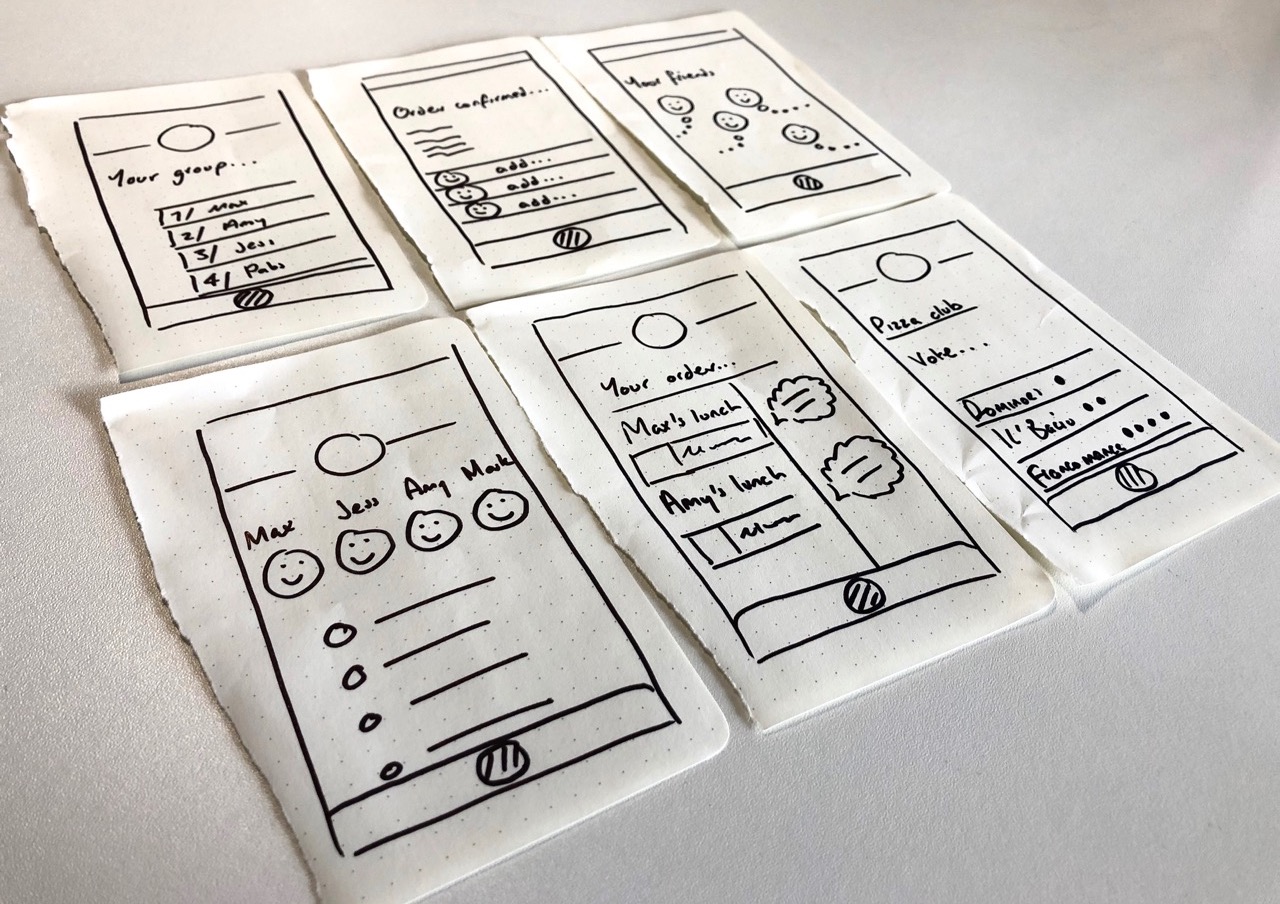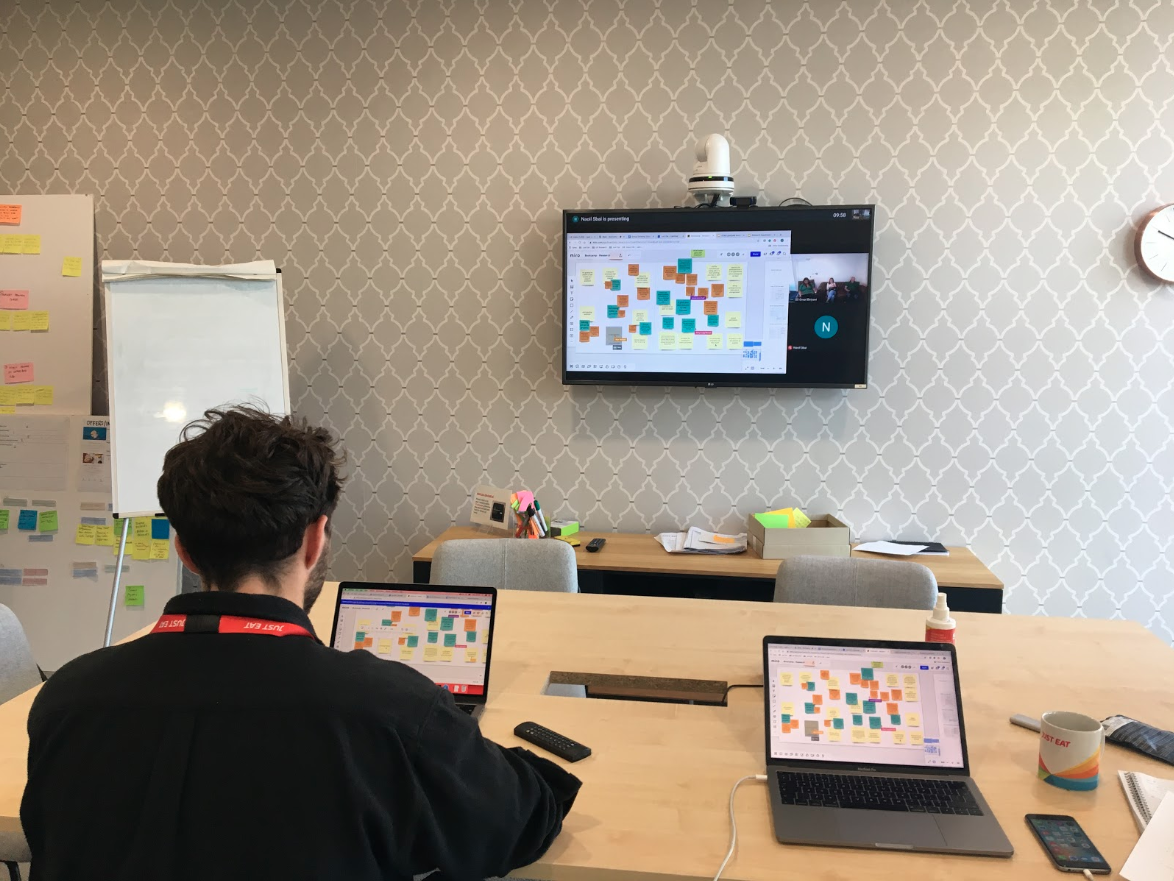The bootcamp
How do you introduce three graduates starting their very first UX role into your team? The UX&D team at Just Eat did it with a bootcamp. It was a creative and effective way to introduce us to life at Just Eat – here’s how it was done.
In September, I joined Just Eat’s first UX graduate programme along with two others in the same position. The bootcamp followed hard on the heels of our corporate induction. We were given a real design brief to work on which gave us the opportunity to learn in context about the product as well as develop our skills. We had coaching from different members of the team for a few hours each day (UX designers, UX researchers, UI designers and copywriters), and were set exercises and tasks designed to facilitate self-learning.
One of the key aims of the bootcamp was to get us up to speed with the way the team works here. UXers at Just Eat work in fast-paced design sprints. We work within multidisciplinary teams focusing on a different problem or set of problems each sprint. Just Eat sprints are fortnightly blocks of work, and do not follow a prescribed format; we have iterated on the format to develop one that works for us. At the end of each sprint, we speak to customers / restaurant partners to investigate problem areas, learn about new design iterations or answer discovery questions.
The bootcamp was a way of us learning about and getting used to this way of working, before being fully immersed within it.

The brief
The problem space we were given to explore was ‘group ordering’. We know that some customers, in certain situations, want to order food as a group rather than on their own. Group ordering is a real world customer behaviour that the team wanted to learn more about and potentially support, so it was a fitting topic to be used in the bootcamp.
Week one: we learned by doing
In the first week, UX designers taught us about the first stages of the design sprint. They first taught us about the ‘sprint kickoff’. We ran a mini kickoff session ourselves where we discussed the problem, breaking it up and exploring it in detail. Once we felt we had a good understanding of the problem space, we learned about ideation strategies, like Crazy 8s, which we used to brainstorm some ideas for solutions to the problem.

Also in week one, UX researchers introduced us to various research methods. They went through how they are used in the industry and what kinds of problems each research method is best suited to exploring. We also learned how to work with our Copywriters during the design process, and learned some basic Sketch skills to turn our best sketched ideas into low fidelity digital prototypes, in preparation for testing the following week.
Week two: from static wireframes to user research of an interactive prototype
The second week of bootcamp involved taking our low fidelity prototypes and making them interactive with Invision. We were then taught how to design and write a discussion guide capable of testing our hypotheses in user testing.

Once our discussion guide was finished, we watched a couple of user research demonstrations from UX researchers in the team then each of us took a turn facilitating a session. During the session we carried out semi-structured interviews, probing participants about their takeaway and group ordering experiences. We also took them through some scenarios using our prototype to complete some tasks, looking for usability and UX insights about our designs. Whilst the interviews were going on, the rest of the group were watching at their desks and taking notes on a Miro board.

After user research, we analysed our findings as a group thematically, using our notes on a Miro board. From what seemed like an impossible amount of notes, we managed to build some themes and developed these into key insights about our design. Through this process, we learned a lot about collaboration and remote working, as we needed to talk through decisions as we shaped our analysis. We also collaboratively started building a playback slide deck of our findings, that we were to share with the team the following week.
Week three: playing back our findings and refining the UI
In week three, we finished preparing the slide deck and presented it to the UX team. This was a great way to get us used to sharing our learnings with the team and learn how to distil UX work into a digestible and impactful form.
Finally, we spent some time with the UI designers in the team, learning about their processes of creating beautiful interactive designs and how to deliver designs to developers ready for production. We had the opportunity to make our own style guides, by cutting and sticking fonts and colour palettes from the current design language used at Just Eat. We then used our style guides to create higher fidelity prototypes of our group ordering designs, and then learned how to animate these in Principle.
What we learned
Coming from an academic environment into a large UX team at a major technology company like Just Eat is daunting – there is so much to learn and take in, and the pace of work is something you need to get used to fast. Through the bootcamp we had an exciting, intense first few weeks at Just Eat, but most importantly were able to learn the key skills necessary to make our transition from academia to industry as smooth as possible.
Here’s a list of the key skills we learnt during the bootcamp –
- The design sprint structure at Just Eat
- An introduction to tools: Miro, Trello, Sketch, InVision, Craft, Principle
- Collaboration and remote working via Google Hangouts
- Ideation strategies
- The importance of phrasing when doing user research
- Discussion guide writing and user research facilitation
- How to make an idea into a prototype and take it into research within a week
- Effective communication for good teamwork
- How to present UX design and research work to stakeholders and colleagues in a Playback
Overall, the bootcamp was a really great way to meet the team in London and Bristol and get up to speed with how the team works by being taught by people of different disciplines. Thank you so much to everyone who took time out of their busy days to facilitate the bootcamp!
So, if your company is taking on UX graduates or even some junior UXers consider running a bootcamp during onboarding to get them settled in. It will leave them wonton more!